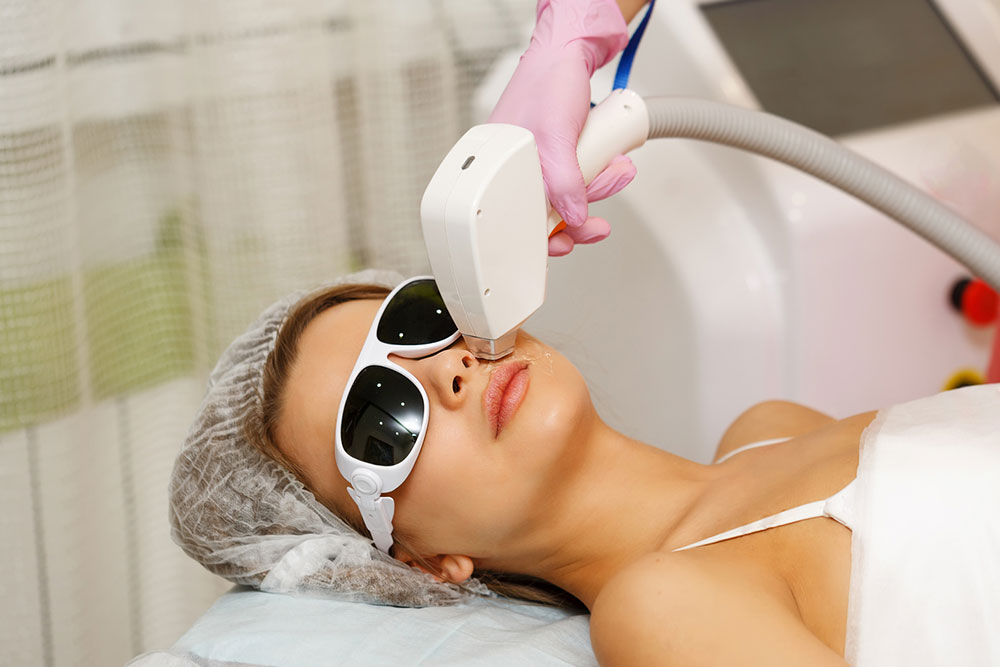
Pros and cons of laser hair removal devices
There are several ways to remove body hair, and laser hair removal devices are one of them. These devices involve using a beam of light through targeted areas to remove unwanted hair from different parts of the face and body. However, before opting for this technique, one should be aware of the pros and cons to know what to expect from the process. So, consult a specialist and learn about the device, process, and the potential results.
The benefits of using laser hair removal methods
Long-term solution
Laser hair removal devices offer results that last longer than traditional methods, such as shaving or waxing. The method reduces hair growth by a significant margin, and several customers do not see regrowth for months or years. Hair that grows back might appear lighter in color and thinner. A treatment provider may recommend a relevant schedule to treat the individual’s hair type and usually book the appointments during the anagen or “growing” phase. Moreover, the process also requires less upkeep as compared to other hair removal methods. Those who shave to get rid of body hair have to do so every few days. Options like waxing or threading may last about four weeks, whereas laser hair removal treatments last much longer following the sessions carried out by the expert.
No downtime involved
Another benefit of laser hair removal devices is that they are non-invasive. While the process can leave the skin a little red and swollen for some time, one can return to their daily routine immediately after it. Despite the lack of downtime, one must remember that one must avoid stepping out in the sun or using tanning beds or sun lamps for a brief time following the procedure.
Multiple treatable areas and easy-to-address complications
Laser removal is a method that is used to eliminate hair in various areas of the body and face, including armpits, legs, hands, and delicate areas like the upper lip, bikini lines, cheeks, and chin. This method can be beneficial, especially for women with Polycystic Ovary Syndrome (PCOS), a health condition that affects hormone levels and accelerates excess hair growth. In such cases, constant maintenance can become stressful. Laser hair removal devices can help target the problematic areas and provide a lasting effect.
Reduced ingrown hair
An ingrown hair may occur when the hair strand curls back and grows back into the skin. The phenomenon can trigger red and painful bumps. This can be caused by hair removal methods like threading, shaving, and waxing. Those prone to ingrowths may benefit from laser hair removal. The treatment helps ensure the problem is addressed at the root and targets the follicles directly. Following this, it prevents the follicle from growing hair and helps keep the skin brighter.
The disadvantages
Every hair removal method has its downsides. Here are a few that one should be mindful of.
The process is time-consuming
Unlike traditional techniques, where hair is removed instantly, laser hair removal is time-consuming. While a session may take about 15 to 60 minutes based on the treatment area, one might need to make 2 or 3 appointments to see results and up to 8 treatment cycles until the entire process is complete. Experts also recommend spacing out treatments 5 to 6 weeks apart, allowing hair to grow so they can be lasered.
Potential side effects
Every hair removal method carries risks, including those associated with laser hair treatment devices. For starters, one might experience blistering redness, discoloration, and scarring. One’s hair may also grow back and require yearly treatments to keep new hair growth at bay. Individuals being treated for hormonal imbalances may also have low success with instances of hair regrowth. This might call for more treatments or maintenance sessions. In addition, treatments done by non-certified personnel could result in burns or scars on the skin. The lack of adequate licensing requirements differs from one state to another, with some having no criteria at all. Therefore, one should ensure the procedure is carried out by a dermatologist or under the supervision of a certified healthcare professional.
It is an expensive process
While treatments with a laser hair removal device offer more permanent solutions, one should note that it is more expensive than traditional methods like shaving or waxing. The cost of a single session could range between $100 and $800. Experts indicate the average cost of laser hair removal with no other associated expenses was about $390. However, despite the cost being higher initially, it could help save money over time, compared to purchasing a razor or shaving cream regularly.
Results are based on complexion
A laser hair removal method works differently based on one’s skin complexity. The treatment works best on fair skin with dark hair because the contrast between the skin tone and the hair color allows the laser to easily pick up the target areas. However, people with darker skin tones have pigment-rich skin that may prevent the hair follicle’s adequate absorption of the laser. An expert may recommend a specific type of laser hair removal device.


